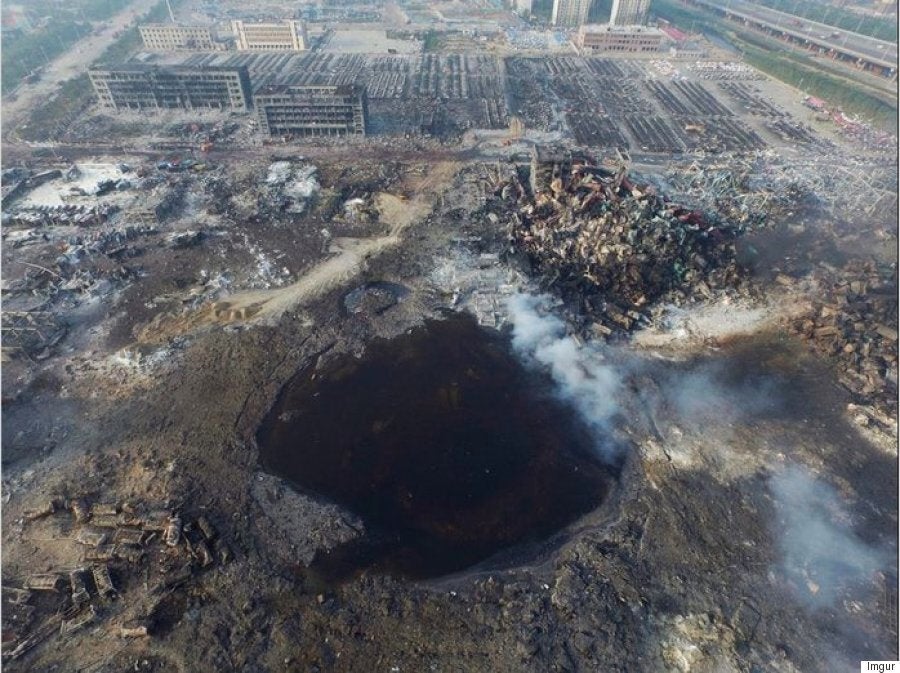The scorched aftermath of the deadly Tianjin disaster has been revealed in a series of apocalyptic images.
A fire and a series of blasts occurred on 12 August at the port city, 120 kilometers (75 miles) east of Beijing, claiming the lives of at least 104 people, with the death toll still rising.
Chinese authorities have since ordered everyone within three kilometres of the exploding warehouse full of hazardous chemicals, to evacuate the area.

A huge crater has since emerged in the ground and the aerial photos show the scale of the devastation alongside 8,000 mangled, melted cars.
With large areas of the city in ruins, local officials have been pressed to explain why authorities permitted hazardous goods warehouses so close to residential complexes and critical infrastructure.
Two Chinese news outlets, including the state-run The Paper, reported that the warehouse was storing 700 tons of sodium cyanide - 70 times more than it should have been holding at one time - and that authorities were rushing to clean it up.
Sodium cyanide is a toxic chemical that can form a flammable gas upon contact with water.

The magnitude of the original blasts was captured by the US Geological Survey which has equipment in Beijing (around 100 miles away), recording the Tianjin blasts at a magnitude of 2 or 3 on the Richter scale.
Tianjin, with a population of about 15 million, is one of the country's major ports.